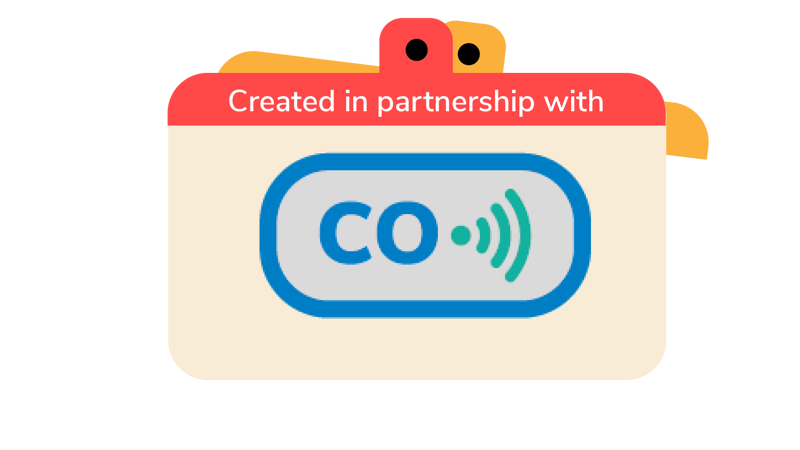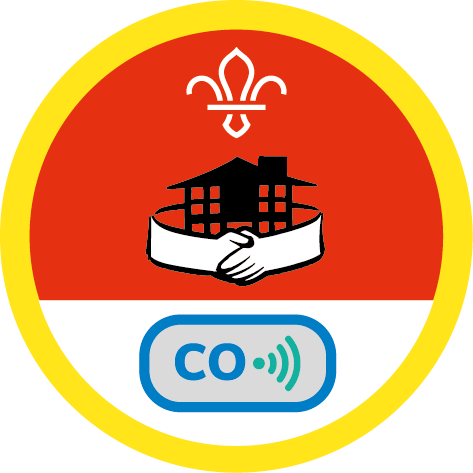
Safe and sound
You’ll need
- A4 paper
- Pens or pencils
Before you begin
- Make sure everyone knows what carbon monoxide is and where it can come from. Try playing Not CO-ol as a simple way to explore this.
Safety checklist
- Everyone should split into pairs or small groups and create a safety checklist. Each group needs some paper and something to write with.
- Talk about some of the ways we can keep ourselves safe from carbon monoxide. As well as the ideas below, it’s also important to think about where the emergency exits are, and how you would tell an adult if you notice something is wrong.
- Each group should write the checklist on a piece of paper.
- Each group should look around the meeting place and see what they can find from the checklist. Don’t touch any of the appliances or alarms you find.
- Each group should write down everything they see related to their safety checklist, ready to report back.
- If you or a young person spots anything not quite right, suspects carbon monoxide, or smells gas, call 0800 111 999
- Tests - All gas appliances like boilers and ovens should have stickers or a sheet of paper showing when they were last tested to make sure they aren’t producing carbon monoxide. These are called test certificates.
- Ventilation - While more modern appliances may not need any form of ventilation, older ones could require good ventilation in the form of window vents, air vents or air bricks in the walls. Some appliances will also have dedicated vents built in to the walls. All ventilation should be clear of any blockages inside and out, and working properly. Good airflow can help prevent build up of dangerous gases, as well as too much heat and moisture in the room. Things like candles and open fires also need good ventilation and shouldn't be used in confined spaces.
- Age - Carbon monoxide comes from fuel not burning properly, and old appliances are more likely to do this. This means regular testing is super important.
- Fireplaces - Open fires or log burners can produce carbon monoxide. The chimney should be swept out regularly so soot doesn’t build up.
- Alarms - Anywhere there is an appliance or a place where people sleep needs to have a working carbon monoxide alarm to keep everyone safe.
Report back
- Everyone should come back together to discuss what they found. Is your meeting place safe from carbon monoxide?
- Let everyone know that if they hear a carbon monoxide alarm going off, they should leave the building safely just like during a fire alarm.
- A carbon monoxide alarm detects carbon monoxide in the room and makes a loud sound to warn of the danger. You could test the alarm to let everyone hear the sound too.
You should regularly test the alarm and check its expiry date to make sure it's working properly. Replace the alarm straight away if it fails the test or reaches its expiry date.
Reflection
This activity was about being responsible and developing skills so we can keep ourselves and other people safe. There are lots of things we use every day to keep us safe, like seatbelts, zebra crossings, and the things on our carbon monoxide safety checklist. What other things can you think of that we use all the time to keep us safe?
How can we use what we’ve learned to help keep others safe? We could help to check other places we go to make sure they are safe, or tell other people how they can check for safety too.
Safety
All activities must be safely managed. You must complete a thorough risk assessment and take appropriate steps to reduce risk. Use the safety checklist to help you plan and risk assess your activity. Always get approval for the activity, and have suitable supervision and an InTouch process.
- Step it up by asking people to come up with their own checklist: what can you think of?
- Make things simpler by explaining the checklist and doing a tour of the building together. What can everyone spot along the way that helps to keep them safe?
- Make sure your space is suitable for everyone to move around safely. Consider getting some props to show some of the things in the meeting place if this isn’t the case.
- Do not test the alarms around anyone who dislikes loud noises.
All Scout activities should be inclusive and accessible.
Take your safety checklist and check out your home or a relative’s house. Who can you help keep safe? Click here to see more guidance on carbon monoxide safety.
Learning about dangerous things can sometimes be a little scary. Make sure to allow time for answering questions to help reassure everyone and make them feel safe.
